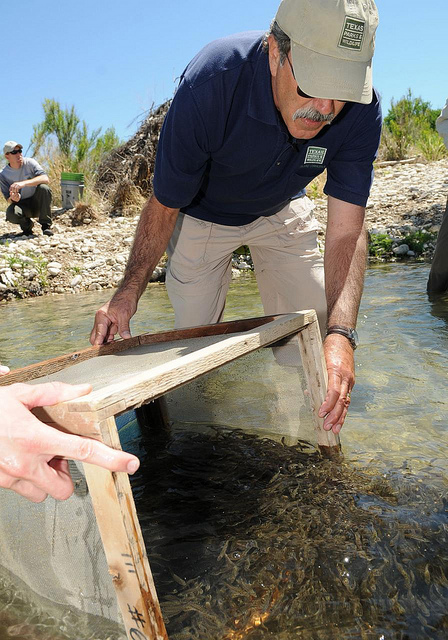Nature: Adaptations
This is Passport to Texas
Some animal and plant species evolve in specific locations – like springs – and only exist there and nowhere else.
25—Typically what happens is you have the ancestral version of the species throughout. Things like head springs, or spring areas, those are special isolated type environments. The temperature doesn’t change; the water chemistry doesn’t change because it’s coming out of the ground. So you’ll have animals that start specializing for that very stable environment. So certainly in springs throughout the state we’ve often seen specialized animals.
Dr. Garry Garret, a fisheries biologist formerly with TPW says biologists work to understand specialization among these species.
27—But the other real useful thing about understanding this is these are called indicator species. They’ve been around for thousands of years…they’ve done just fine…as biologists we monitor their status. When we see their status starting to go down, it tells us that the environment they’re in is going down. Not just them. They’re an indicator of a larger problem. So by watching these animals or plants they tell us in advance of things degrading that ultimately may affect humans. So they’re kind of our early warning system.
And we can all use a little warning when change is afoot.
The Wildlife and Sport Fish Restoration program supports our series and funds diverse research projects throughout Texas
For Texas Parks and Wildlife…I’m Cecilia Nasti.



 Passport to Texas is a
Passport to Texas is a  Passport to Texas is made available by:
Passport to Texas is made available by: